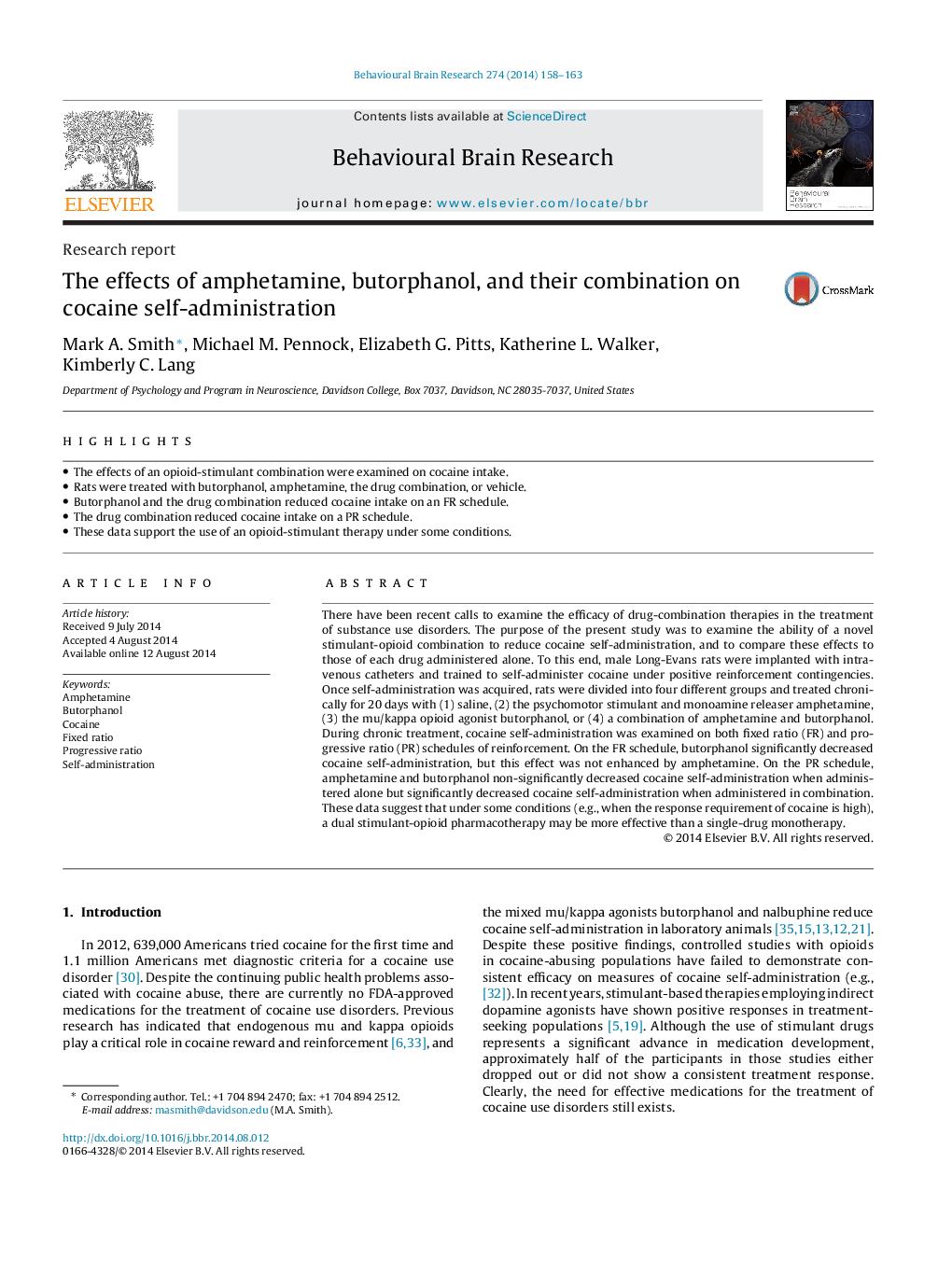| Article ID | Journal | Published Year | Pages | File Type |
|---|---|---|---|---|
| 6257732 | Behavioural Brain Research | 2014 | 6 Pages |
â¢The effects of an opioid-stimulant combination were examined on cocaine intake.â¢Rats were treated with butorphanol, amphetamine, the drug combination, or vehicle.â¢Butorphanol and the drug combination reduced cocaine intake on an FR schedule.â¢The drug combination reduced cocaine intake on a PR schedule.â¢These data support the use of an opioid-stimulant therapy under some conditions.
There have been recent calls to examine the efficacy of drug-combination therapies in the treatment of substance use disorders. The purpose of the present study was to examine the ability of a novel stimulant-opioid combination to reduce cocaine self-administration, and to compare these effects to those of each drug administered alone. To this end, male Long-Evans rats were implanted with intravenous catheters and trained to self-administer cocaine under positive reinforcement contingencies. Once self-administration was acquired, rats were divided into four different groups and treated chronically for 20 days with (1) saline, (2) the psychomotor stimulant and monoamine releaser amphetamine, (3) the mu/kappa opioid agonist butorphanol, or (4) a combination of amphetamine and butorphanol. During chronic treatment, cocaine self-administration was examined on both fixed ratio (FR) and progressive ratio (PR) schedules of reinforcement. On the FR schedule, butorphanol significantly decreased cocaine self-administration, but this effect was not enhanced by amphetamine. On the PR schedule, amphetamine and butorphanol non-significantly decreased cocaine self-administration when administered alone but significantly decreased cocaine self-administration when administered in combination. These data suggest that under some conditions (e.g., when the response requirement of cocaine is high), a dual stimulant-opioid pharmacotherapy may be more effective than a single-drug monotherapy.
